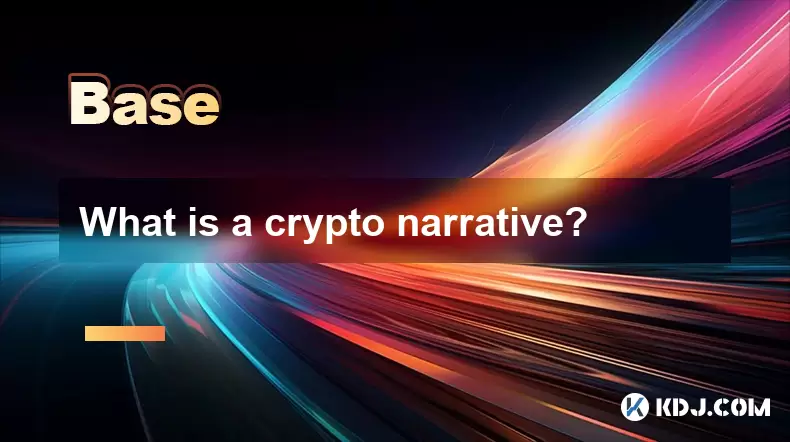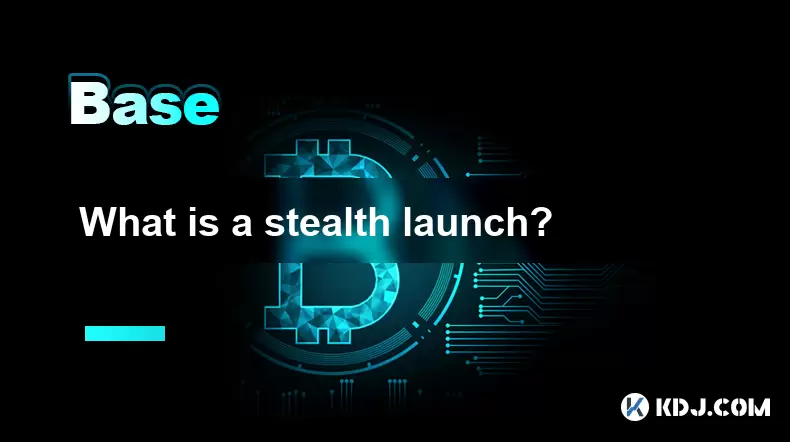-
 Bitcoin
Bitcoin $108,848.6733
0.48% -
 Ethereum
Ethereum $2,650.4108
3.28% -
 Tether USDt
Tether USDt $1.0000
0.00% -
 XRP
XRP $2.3770
4.09% -
 BNB
BNB $662.7961
0.67% -
 Solana
Solana $154.0288
2.41% -
 USDC
USDC $0.9999
-0.01% -
 TRON
TRON $0.2877
0.44% -
 Dogecoin
Dogecoin $0.1728
2.01% -
 Cardano
Cardano $0.6087
4.71% -
 Hyperliquid
Hyperliquid $39.0653
3.31% -
 Sui
Sui $2.9549
2.70% -
 Bitcoin Cash
Bitcoin Cash $506.5404
0.68% -
 Chainlink
Chainlink $13.9918
3.85% -
 Stellar
Stellar $0.2926
15.31% -
 UNUS SED LEO
UNUS SED LEO $9.0547
-0.25% -
 Avalanche
Avalanche $18.5380
2.95% -
 Hedera
Hedera $0.1687
5.02% -
 Shiba Inu
Shiba Inu $0.0...01203
1.93% -
 Toncoin
Toncoin $2.8229
2.41% -
 Litecoin
Litecoin $88.3562
2.27% -
 Monero
Monero $318.5282
1.46% -
 Polkadot
Polkadot $3.5233
4.53% -
 Dai
Dai $1.0001
0.00% -
 Ethena USDe
Ethena USDe $1.0009
0.06% -
 Uniswap
Uniswap $8.1560
8.38% -
 Bitget Token
Bitget Token $4.3553
1.56% -
 Aave
Aave $297.6786
4.28% -
 Pepe
Pepe $0.0...01023
2.74% -
 Pi
Pi $0.4650
1.98%
What is a light client?
2025/07/08 14:00

Understanding the Concept of a Light Client
A light client, also known as a lightweight client, is a type of software used in blockchain networks that allows users to interact with the blockchain without downloading and verifying the entire blockchain. Unlike full nodes, which store all transaction data and validate every block independently, light clients rely on simplified payment verification (SPV) to confirm transactions.
The main purpose of a light client is to provide faster access to the blockchain while using fewer resources such as storage space and bandwidth. This makes it ideal for mobile devices or computers with limited capabilities. By only downloading block headers instead of full blocks, a light client can verify transactions efficiently.
How a Light Client Operates
To understand how a light client works, it's essential to grasp the concept of SPV. In this model, the client does not process the entire contents of each block. Instead, it downloads only the block headers, which contain metadata about each block, including a hash of the previous block, a timestamp, and a Merkle root.
- The light client connects to full nodes on the network.
- It requests the latest block headers to build a chain of hashes.
- When a user wants to verify a specific transaction, the light client asks for a Merkle proof from the full node.
- Using the Merkle root from the block header, the light client confirms whether the transaction is included in that block.
This method ensures that the light client can trustlessly verify transactions without having to download gigabytes of data.
Differences Between Light Clients and Full Nodes
There are significant differences between a light client and a full node. A full node downloads and validates every transaction and block on the blockchain. It plays a crucial role in maintaining the network’s integrity by enforcing consensus rules.
On the other hand, a light client does not enforce these rules directly. It assumes that the majority of miners are honest and that the longest chain represents the valid state of the network. While this assumption reduces the workload on the device, it also introduces some level of trust in the network.
- Full nodes contribute to decentralization and security.
- Light clients prioritize convenience and accessibility.
- Full nodes require more disk space and bandwidth.
- Light clients operate efficiently on low-end hardware.
These distinctions make each type suitable for different use cases within the cryptocurrency ecosystem.
Use Cases for Light Clients
The flexibility of a light client makes it highly applicable in various scenarios:
- Mobile wallets: Most mobile cryptocurrency wallets use light clients to enable quick and efficient transaction verification without requiring users to sync the entire blockchain.
- IoT devices: Devices with limited processing power benefit from the lightweight nature of light clients when interacting with decentralized applications.
- Quick transaction checks: Merchants or service providers who need to verify incoming payments rapidly often rely on light clients to ensure efficiency.
In each of these situations, the light client strikes a balance between speed and functionality, making it a practical solution for everyday blockchain interaction.
Security Considerations for Light Clients
While light clients offer many advantages, they also come with certain security trade-offs. Since they do not validate every transaction themselves, there is a risk of receiving incorrect information from malicious full nodes.
Some potential risks include:
- Accepting invalid transactions if connected to dishonest nodes.
- Being vulnerable to denial-of-service attacks if the connected nodes go offline.
- Reduced privacy since the light client must query external nodes for information.
To mitigate these risks, developers often implement additional layers of security, such as connecting to multiple nodes simultaneously or using trusted checkpoints to verify the blockchain's state.
Implementing a Light Client: Step-by-Step Guide
Setting up a light client involves several technical steps, especially for developers looking to integrate it into an application:
- Choose a compatible blockchain protocol that supports light client functionality.
- Select or develop a library that implements the SPV protocol for that specific blockchain.
- Establish a connection to full nodes using the appropriate peer-to-peer protocol.
- Request and validate block headers to construct the blockchain’s history.
- Implement logic to request Merkle proofs for specific transactions.
- Handle network errors gracefully and maintain stable connections to reliable nodes.
- Ensure secure communication through encryption and authentication mechanisms.
Each step requires careful implementation to ensure the light client functions correctly and securely within the network.
Frequently Asked Questions
What types of devices are best suited for running a light client?
Devices with limited storage, memory, or bandwidth—such as smartphones, tablets, or embedded systems—are ideal candidates for running a light client due to their reduced resource requirements.
Can a light client send transactions to the blockchain?
Yes, a light client can broadcast transactions to the network. However, it cannot fully verify the validity of those transactions before broadcasting, relying instead on full nodes to validate them later.
Is it possible to switch from a light client to a full node?
Yes, depending on the software being used, users can typically upgrade from a light client to a full node by downloading and validating the complete blockchain history.
Do all cryptocurrencies support light clients?
Not all cryptocurrencies natively support light clients, but many popular ones like Bitcoin and Ethereum have implementations that allow for lightweight verification methods.
부인 성명:info@kdj.com
제공된 정보는 거래 조언이 아닙니다. kdj.com은 이 기사에 제공된 정보를 기반으로 이루어진 투자에 대해 어떠한 책임도 지지 않습니다. 암호화폐는 변동성이 매우 높으므로 철저한 조사 후 신중하게 투자하는 것이 좋습니다!
본 웹사이트에 사용된 내용이 귀하의 저작권을 침해한다고 판단되는 경우, 즉시 당사(info@kdj.com)로 연락주시면 즉시 삭제하도록 하겠습니다.
- Blockdag는 Crypto Pack : 2025 Blockdag, Cardano, Litecoin 및 Polkadot의 2025 전망
- 2025-07-10 10:50:12
- ONDO PRICE WATCH : 트레이더 눈의 주요 저항 잠재적 $ 3 목표
- 2025-07-10 10:50:12
- 비트 코인 대 브라질 리얼 : 관세 전쟁에서 변동성 탐색
- 2025-07-10 11:10:12
- VC 회사, 비트 코인 및 자금 : Crypto의 미래에 대한 뉴욕 분
- 2025-07-10 11:10:12
- Cronos (CRO)는 ETF Buzz에서 16% 점프 : NYC Take
- 2025-07-10 11:15:12
- Pump.fun, 토큰 ICO, 투자 : 밈 동전 매니아 탐색
- 2025-07-10 10:30:12
관련 지식

What is a user-generated content (UGC) NFT platform?
2025-07-04 13:49:21
<h3>Understanding the Concept of a UGC NFT Platform</h3><p>A user-generated content (UGC) NFT platform is a digital marketplace or e...

What is composability in DeFi?
2025-07-06 16:07:28
<h3>Understanding the Concept of Composability in DeFi</h3><p>Composability in DeFi refers to the ability of decentralized finance p...

What is a "crypto primitive"?
2025-07-05 22:14:34
<h3>Defining the Concept of a Crypto Primitive</h3><p>In the context of blockchain and cryptocurrency, a crypto primitive refers to ...

What is a crypto narrative?
2025-07-07 22:56:30
<h3>Defining the Concept of a Crypto Narrative</h3><p>A crypto narrative refers to the overarching story or theme that drives intere...

What is a stealth launch?
2025-07-08 06:42:39
<h3>What Exactly Defines a Stealth Launch in Cryptocurrency?</h3><p>A stealth launch refers to the practice of launching a cryptocur...

What is a fair launch?
2025-07-05 19:31:58
<h3>Understanding the Concept of a Fair Launch</h3><p>A fair launch refers to the release of a cryptocurrency or blockchain project ...

What is a user-generated content (UGC) NFT platform?
2025-07-04 13:49:21
<h3>Understanding the Concept of a UGC NFT Platform</h3><p>A user-generated content (UGC) NFT platform is a digital marketplace or e...

What is composability in DeFi?
2025-07-06 16:07:28
<h3>Understanding the Concept of Composability in DeFi</h3><p>Composability in DeFi refers to the ability of decentralized finance p...

What is a "crypto primitive"?
2025-07-05 22:14:34
<h3>Defining the Concept of a Crypto Primitive</h3><p>In the context of blockchain and cryptocurrency, a crypto primitive refers to ...

What is a crypto narrative?
2025-07-07 22:56:30
<h3>Defining the Concept of a Crypto Narrative</h3><p>A crypto narrative refers to the overarching story or theme that drives intere...

What is a stealth launch?
2025-07-08 06:42:39
<h3>What Exactly Defines a Stealth Launch in Cryptocurrency?</h3><p>A stealth launch refers to the practice of launching a cryptocur...

What is a fair launch?
2025-07-05 19:31:58
<h3>Understanding the Concept of a Fair Launch</h3><p>A fair launch refers to the release of a cryptocurrency or blockchain project ...
모든 기사 보기

























































































